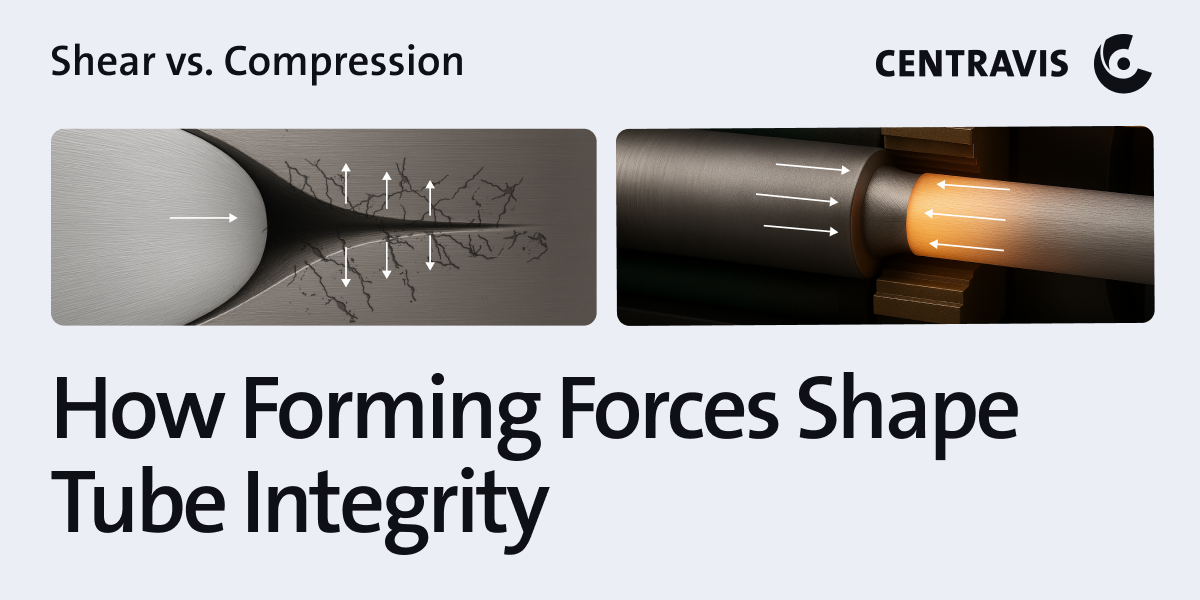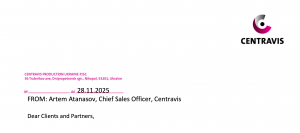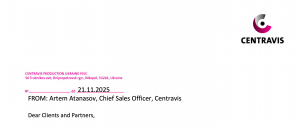
Seamless stainless-steel tubes owe their reliability to events that happen in milliseconds inside a deformation zone no wider than a few millimetres. Whether the billet is pierced by skewed rolls or compressed through an extrusion die, two fundamentally different stress states—shear and compression—govern metal flow, grain evolution and, ultimately, the service life of the finished tube.
The Physics Behind Each Route
Piercing relies on the Mannesmann effect. Skewed rolls rotate and feed a white-hot billet over a stationary plug, forcing the centre to split and flow outward. Tangential roll forces generate high shear stresses (τ) along helical paths. At the same time an axial force (F) drives the billet forward, creating a combined state of torsion and tension. The shear component is essential: without it the core would not open. Yet the very same stress promotes localised strain gradients that can trigger void growth or laminate inclusions into the inner wall.
Extrusion replaces shear with near-hydrostatic compression. A container and dummy block confine the billet, and a press ram pushes it through a conical die. Radial stresses almost equal axial pressure, producing a triaxial compressive field that suppresses void nucleation and collapses pre-existing microporosity. Grain boundaries are flattened and elongated in the flow direction, forming a fine, uniform fibre ideal for cyclic-pressure or high-temperature duty.
Grain Structure and Defect Population
Shear deformation in piercing elongates grains in a spiral orientation and encourages dynamic recrystallisation only in regions of highest strain. The transition from high shear at the ID to lower shear near the OD generates a gradient in grain size and, in austeno-ferritic alloys, a gradient in phase balance. Where inclusions exist, shear tends to smear them into stringers parallel to the rolling direction—harmless for some line-pipe grades, but a critical liability in urea-synthesis or hydrogen service where crack incubation energy is low.
Compression in extrusion promotes homogeneous grain refinement across the wall thickness. Because the billet core is usually trepanned beforehand, inclusions and centre-line segregation never enter the deformation zone. The result is a concentric texture with minimal orientation dispersion, translating into isotropic yield behaviour and tighter residual-stress envelopes after straightening or U-bending.
Surface Evolution and Residual Stresses
During piercing, friction between rolls, billet and plug generates additional shear at both ID and OD. If lubrication is inadequate or furnace scale remains, these zones accumulate micro-gouges that become stress concentrators. Residual hoop tension often persists on the ID, a by-product of uneven shear release during sizing. Such tension must be removed by solution annealing or post-forming heat treatment; otherwise stress-corrosion cracking thresholds fall sharply in chloride media.
In extrusion, glass-based lubricants separate metal from tooling and act as oxygen barriers. The compressive regime leaves a balanced or slightly compressive hoop stress on both surfaces, beneficial for fatigue initiation resistance. Surface roughness after pickling typically remains below Ra 0.8 µm without additional honing, an advantage when tight Ra or clean-bore specifications dictate minimal downstream finishing.
Integrity Under Service Loads
Finite-element studies show that inclusions rotated into the shear plane during piercing experience up to five times the local principal stress of those compressed in extrusion. Under internal pressure, these stringers behave like short cracks with Mode II shear lips, accelerating fatigue growth. Conversely, the fine-grained, inclusion-lean structure of an extruded tube exhibits slower crack-tip opening displacement and higher threshold stress-intensity factors, extending inspection intervals in heat-exchanger or super-heater applications.
Conclusion
Shear and compression are more than academic concepts; they are the invisible architects of tube performance. Understanding how each stress state moulds grain flow, seals or opens voids, and seeds residual stresses equips designers and metallurgists to pick the right forming path for every critical coil, column or feed line. In doing so, they convert metallurgical insight into safer plants, longer uptimes and leaner life-cycle costs—proof that good tubes start with the right kind of force.



